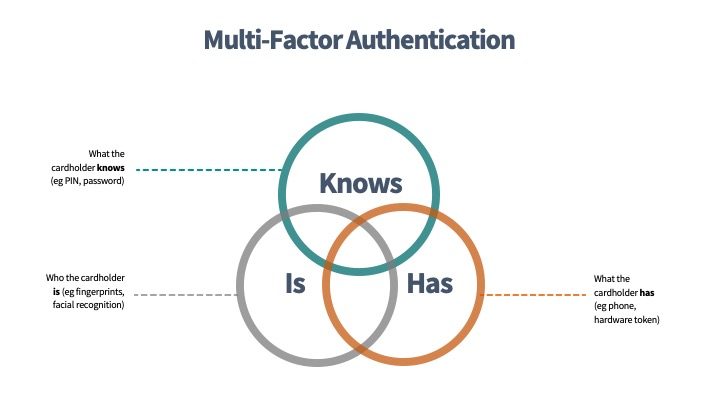The COVID-19 pandemic has forced governments to take unprecedented measures such as restricting travel and implementing strict quarantine requirements. These restrictions have led many cross-border workers to be unable to physically perform their duties in their country of employment. The Organisation for Economic Cooperation and Development (“OECD”) issued recommendations on the implications of the COVID-19 crisis on cross-border workers and other related cross-border matters. This came about after concerns from several jurisdictions in relation to matters arising out of the application of tax treaties due to the impact of the COVID-19 crisis.
The Maltese Commissioner for Revenue announced that it will be adopting the recommendations issued by the OECD on issues arising out of the application of tax treaties due to the impact of the COVID-19 crisis.
The guidance addresses various cross-border tax issues relating to the COVID-19 crisis, including the creation of permanent establishments (‘PE’), the residence status of companies, the taxation of cross-border workers and the residence status of individuals.
The creation of PEs
Some businesses may be concerned that their employees relocated to countries other than the country in which they regularly work, and that working from their homes during the COVID-19 crisis will create a PE for the business in those countries, which would trigger new filing requirements and tax obligations.
In general, a PE must have certain degree of permanence and must be at the disposal of an enterprise in order for that place to be considered a fixed place of business through which the business of that enterprise is wholly or partly carried on.
During the COVID-19 crisis, individuals who stay at home to work remotely are typically doing so as a result of government directives: it is force majeure not an enterprise’s requirement. Therefore, considering the extraordinary nature of the COVID crisis, and to the extent that it does not become the new norm over time, teleworking from home would not create a PE for the business/employer, either because such activity lacks a sufficient degree of permanence or continuity or because, except through that one employee, the enterprise has no access or control over the home office. In addition, it provides an office which in normal circumstances is available to its employees.
The same result is expected in relation to the temporary conclusion of contracts in the home of employees or agents because of the COVID-19 crisis.
In addition, a construction site PE would not be regarded as ceasing to exist when work is temporarily interrupted.
The residence status of companies (the place of effective management)
The residence of a company is generally determined through its Place of Effective Management (‘PoEM’). PoEM has been defined as ‘a place where key management and commercial decisions that are necessary for the conduct of the business of an entity as a whole are, in substance made’. The COVID-19 crisis may raise concerns about a potential change in the PoEM due to a relocation, or inability to travel, of chief executive officers or other senior executives. The concern is that such a change may have as a consequence a change in company’s residence under relevant domestic laws and affect the country where a company is regarded as a resident for tax treaty purposes.
This potential change of circumstances may trigger an issue of dual residence. In such cases, tax treaties provide tie breaker rules to ensure that the entity is resident in only one of the states. There could be instances where, as a result of a change in treaties following the OECD Base Erosion and Profits Shifting (BEPS) Project, the competent authorities would deal with the dual residence issues on a case-by-case basis by mutual agreement. This determination will take into consideration all of the facts and circumstances, including where the meetings of the company’s board of directors or equivalent body are usually held; where the chief executive officer and other senior executives usually carry on their activities; where the senior day-to-day management of the company is carried on; where the person’s headquarters are located; and other similar matters. It is important to note that all relevant facts and circumstances should be examined to determine the “usual” and “ordinary” place of effective management, and not only those that pertain to an exceptional and temporary period such as the COVID-19 crisis.
The taxation of cross-border workers
The income that an employee receives from the employer should be attributable, based on the OECD Commentary on Article 15, to the place where the employment is exercised. There are conditions attached to the place of exercise test. The source state may exercise a taxing right only if the employee is there for more than 183 days or the employer is a resident of the source state, or the employer has in the source state a permanent establishment that bears the remuneration.
The application of this rule in the current context may lead to employers having new withholding obligations and employees having new or enhanced liabilities in different countries. The OECD calls for an exceptional level of coordination between countries to mitigate the compliance and administrative costs for employers and employees associated with involuntary and temporary change of the place where employment is performed.
Furthermore, where a government has stepped in to subsidise businesses in order for them to retain employees on theirpayroll during the COVID-19 crisis, the payments that employees are receiving in these circumstances most closely resemble termination payments, which according to the Commentary to the OECD Model should be attributable to the place where the employee would otherwise have worked. In most circumstances, this will be the place the person used to work before the COVID-19 crisis.
The residence status of individuals
For the purpose of a tax treaty, an individual can be resident in only one country at a time. The starting point is domestic law - if the person is resident in only one country, the matter ends there. If the person is resident in both countries being tested, the tie-breaker rules in the relevant treaty are applied. There is a hierarchy of tests, starting with the question in which state does the person have a permanent home available to them.
In response to the COVID-19 crisis, the OECD’s recommendations mention two main situations:
1. A person is temporarily away from their home (perhaps on holiday, perhaps to work for a few weeks) and gets stranded in the host country by reason of the COVID-19 crisis and attains domestic law residence there.
In this case, it is unlikely that the person would acquire residence status in the country where the person is temporarily because of extraordinary circumstances. Although a person may be considered resident in that country as a result of exceeding a certain number of days, if a tax treaty is applicable, it is likely that the tie breaker test would mostly award treaty residence to the home country because it is unlikely that the person would have a “permanent home” available to them in the host country. Even if they did, the other tie-breaker tests (centre of vital interests, place of habitual abode, and nationality) would award residence to the home state. Therefore, such temporary dislocation would not have any tax implications.
2. A person is working in a country (the “current home country”) and has acquired residence status there, but they temporarily return to their “previous home country” because of the COVID-19 situation.
In this scenario, in cases where the personal and economic relations in the two countries are close but the tie breaker rule was in favour of the current home state, the fact that the person moved to the previous home country during the COVID-19 crisis may risk tipping the balance towards the previous home country. This would usually be decided using the test of “habitual abode”.
“Habitual abode” refers to the frequency, duration and regularity of stays that are part of the settled routine of an individual’s life and are therefore more than transient. Because the COVID-19 crisis is a period of major changes and an exceptional circumstance, in the short-term, tax administrations and competent authorities will have to consider a more normal period of time when assessing a person’s resident status. It is therefore very unlikely that the person would become a resident of that country under the tax treaty due to such temporary dislocation.
The application of this guidance is of a temporary nature due to the current exceptional circumstances being faced by taxpayers on a global level. For clarifications on the application of tax treaties, please contact Nicky Gouder or Luana Farrugia.

